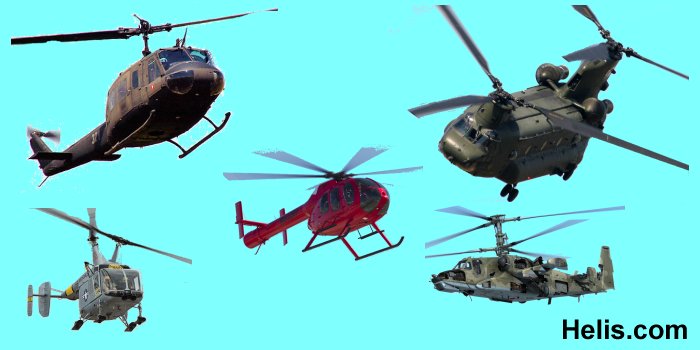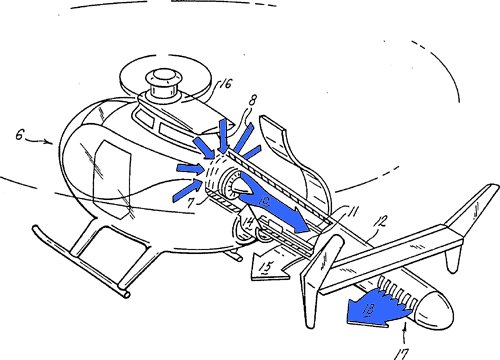
When the engine developed enough power to lift the helicopter,
the main problem was how to counter the main rotor forcing
the fuselage to rotate in the opposite direction of the rotor.
This effect is known as TORQUE.
The classic solution was a small tail rotor to push the fuselage in the opposite direction of the torque force.
Another popular solution were tandem rotors. The primary advantage of this configuration is the ability to lift heavy loads whose position relative to the helicopter's centre of gravity is less critical than in the single rotor configuration. Because there is no anti-torque rotor, full engine power can be applied to lifting the load. Disadvantages of the tandem rotor system are a complex transmission and more drag due to its shape and excessive weight.
And coaxial rotors, in which the goal is obtain a notably compact design. Being the fuselage independent of the lifting system dynamics permits the design to be strictly functional as related to the helicopter mission.
After the torque effect, the other main problem was the tendency of the helicopter to roll laterally in the direction of the retreating rotor blades as the advancing blades pass through denser air and generated greater lift than the retreating blades that pass through less dense air.
This problem was eventually solved by the introduction of a flapping hinge in the rotor head, which allowed the advancing blade to climb slightly, thereby reducing its angle of attack and the amount of lift generated, while the retreating blade fell slightly, thereby increasing is angle of attack and the amount of lift generated.
List of Rotor Configurations in detail


The classic solution was a small tail rotor to push the fuselage in the opposite direction of the torque force.
Another popular solution were tandem rotors. The primary advantage of this configuration is the ability to lift heavy loads whose position relative to the helicopter's centre of gravity is less critical than in the single rotor configuration. Because there is no anti-torque rotor, full engine power can be applied to lifting the load. Disadvantages of the tandem rotor system are a complex transmission and more drag due to its shape and excessive weight.
And coaxial rotors, in which the goal is obtain a notably compact design. Being the fuselage independent of the lifting system dynamics permits the design to be strictly functional as related to the helicopter mission.
After the torque effect, the other main problem was the tendency of the helicopter to roll laterally in the direction of the retreating rotor blades as the advancing blades pass through denser air and generated greater lift than the retreating blades that pass through less dense air.
This problem was eventually solved by the introduction of a flapping hinge in the rotor head, which allowed the advancing blade to climb slightly, thereby reducing its angle of attack and the amount of lift generated, while the retreating blade fell slightly, thereby increasing is angle of attack and the amount of lift generated.
List of Rotor Configurations in detail
NOTAR, the NO TAil Rotor,
uses jet thrust rather than blades to provide
directional stability and reduce noise, providing the world's quietest helicopters.
NOTAR also utilizes Coanda Effect with the rotor downwash across the tailboom and an internal airflow through the tailboom to produce a sideways "lift", or more correctly "thrust" to counter main rotor torque.
The jet thrust from the nozzle at the end of the tailboom is primarily used for directional control, with a very small contribution to anti-torque force.
NOTAR also utilizes Coanda Effect with the rotor downwash across the tailboom and an internal airflow through the tailboom to produce a sideways "lift", or more correctly "thrust" to counter main rotor torque.
The jet thrust from the nozzle at the end of the tailboom is primarily used for directional control, with a very small contribution to anti-torque force.

A Compound Helicopter, such as the Eurocopter X3,
uses helicopter rotor-like system that is driven by its engine for takeoff and landing
but also includes one or more conventional propellers to provide forward thrust during cruising flight.

